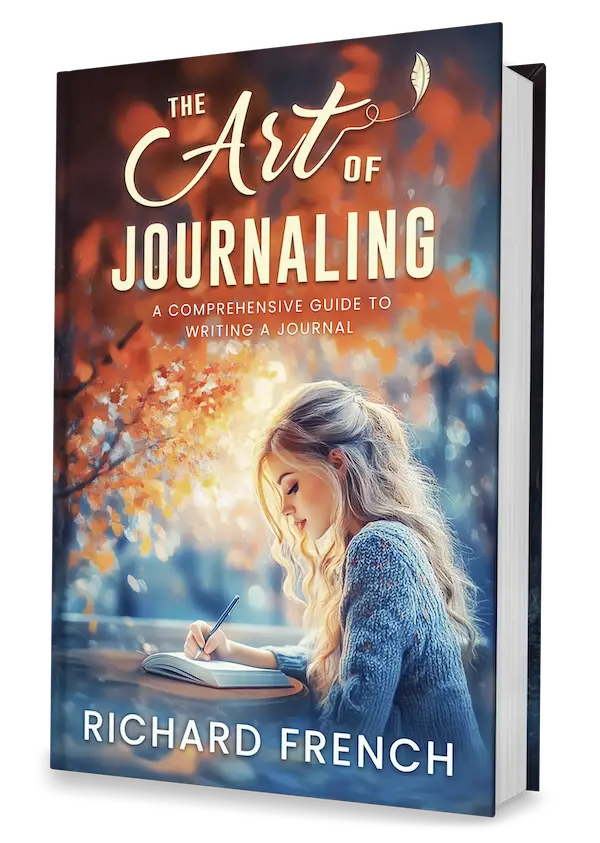Understanding Academic Journaling
Ever scribbled down your thoughts, pondered research quirks, or just needed to keep your head straight in the chaos of academia? Enter academic journaling. It’s your go-to for organizing thoughts, showing off progress, and getting those nifty research methods refined. And right at its core, it’s got the good ol’ literature review.
Importance of Literature Review
What’s a literature review, you ask? It’s like the first date of academic research. You dive into a sea of existing studies to really get what others have said about your topic. It’s not just a checkbox in your research though; it’s the secret sauce that makes everything else click:
- Diving Into Existing Work: It’s your backstage pass to see what’s been happening in your arena of study, giving you the lowdown on theories and methodologies.
- Spotting What’s Missing: You get to play detective, figuring out what’s been glossed over and where your brilliance can shine.
- Setting the Scene: It strings together past studies like pearls, showing how your research threads into the bigger conversation.
- Picking Your Method: Gives you a head start in knowing which method will hit the jackpot for your study and which ones to skip over (Purdue OWL).
Students roll up their sleeves when they’re asked to slap together a literature review as it helps them dive into their topic and build those crucial skills of reading, writing, and thinking like a pro (Purdue OWL).
Role in Research Papers
Research papers without lit reviews are like PB without J. They fit snugly after the intro. Here’s the gist of their role:
- Giving Context: It wraps your quirky research question in context with past studies that say, “Hey, this is why it matters.”
- Building the Research Q: Not just stating your hypothesis, it builds it up, brick by brick.
- Critiquing Sources: It’s not just listing your sources but analyzing their strengths and shortcomings.
- Theoretical Groundwork: Lays out your ideas using a solid theoretical framework (USC Libraries).
| Section | Function |
|---|---|
| Literature Review | Connects the dots, spots the holes, backs up the framework |
| Introduction | Lays out the theme and purpose |
| Methods | Shows off your research tactics |
Beyond papers, lit reviews sometimes dance solo as independent shindigs, analyzing the research buffet and pointing to unplanned conquests (Purdue OWL).
Grab a trusty literature review journal template for your journaling odyssey. It’s like having your own librarian on speed dial, making sure everything’s neat and ready for when you need it (academic reading journal).
Need an academic journaling ace up your sleeve? Check out our academic journaling guide for some hot tips on keeping things organized and research data organization for good measure.
Building a Strong Literature Review
Building a killer literature review is a big deal for any academic project, from dissertations to research papers. This piece breaks down how you can mix and match research, find the best way to organize it, and slap together a solid research question.
Synthesizing Research
Mixing research up means sorting out articles by themes or categories before you start writing. Here’s a few ways to slice it:
- Thematic: Stick articles together based on common themes or ideas.
- Chronological: Line ’em up by when they hit the press.
- Methodological: Group by the research style they use.
The University of Oregon reckons these methods help piece together a clear picture of the existing work.
To do this like a pro:
- Gather up and take a gander at articles that fit your bill.
- Jot notes in an annotated bibliography.
- Identify popular themes, methods, or trends.
- Sort your stuff using one of those styles above.
Once you’re done, you’ll have a handle on what’s out there and be ready to ace that literature review.
Organizational Patterns
Literature reviews can be arranged based on what you’re aiming for. Here’s a few patterns you might dig:
- Thematic: Zeros in on recurring themes or topics.
- Methodological: Highlights different research methods.
- Theoretical: Delves into various theories revolving around the topic.
- Chronological: Looks at the literature over time.
- Integrated: Mixes approaches for a full-on review.
Here’s a handy table:
| Pattern | What it Focuses On |
|---|---|
| Thematic | Themes, Topics |
| Methodological | Research Methods |
| Theoretical | Theories and Models |
| Chronological | Timeline of Development |
| Integrated | Mix of Approaches |
Want more info? Check out Purdue OWL.
Writing a Precise Research Question
A rock-solid literature review starts with a well-thought-out research question. It keeps you on track and zoomed in on your topic.
To get your question going:
- Drum up a general area: Pick something that piques your curiosity.
- Narrow it down: Hone in on specific parts or side topics.
- Craft a question: Make sure it hits what you want to uncover or unravel.
Your question should be:
- Crystal clear and super specific.
- Answerable with the current literature.
- Relevant to your grand research ambitions.
For example:
- Wide Topic: “Effect of Social Media.”
- Focused Topic: “Effect of Social Media on School Grades Among Teens.”
- Research Q: “How does scrolling social media impact high school students’ grades?”
Need help for writing questions? Hit up our article on research question development.
By mixing research, picking a smart pattern, and crafting a sharp research question, you’re set to whip up a literature review that powers up your academic goals. Check out more stuff on academic journaling guide and organize research citations for extra tips and tricks.
Sources and Research for Literature Review
Putting together a useful literature review journal starts with diving into solid research and scoping out your sources. The heart of a good literature review is how well those sources are chosen and examined.
Scholarly Articles and Databases
Scholarly articles and databases are essential tools. If you’re in academia, whether you’re teaching or learning, you’ll want to tap into places like JSTOR, PubMed, and Google Scholar. These databases are treasure troves of peer-reviewed journals, papers, and other scholarly writings you’ll need to create a top-notch literature review.
Here’s a peek at some go-to databases:
| Database | Focus Area | Access Type | Highlights |
|---|---|---|---|
| JSTOR | Humanities, Social Sciences | Subscription | Loads of archives, cross-discipline material |
| PubMed | Biomedical, Life Sciences | Free | Packed, Medline checked |
| Google Scholar | Multidisciplinary | Free | Wide-ranging stuff, tracks citations |
Reading and Analyzing Abstracts
Abstracts are your secret weapon when you’re pressed for time. They provide a quick snapshot of what the article’s about—its main ideas, how the research was done, and what it all means. Checking the discussion sections also gives you a sense of the study’s impact and analytical takeaways (University of Nevada, Reno). Picking out the useful stuff from the not-so-useful is what it’s all about.
Things to ponder when scanning abstracts:
- Research Question: Does it connect with your own investigation? (develop your research question)
- Methodology: Is the approach fitting for your topic?
- Findings: Are the results meaningful and well-founded?
Types of Literature Reviews
Literature reviews come in all shapes and sizes, each doing its own thing. Knowing which type works best for your study helps you keep your review organized and focused.
| Type | Aim | Features |
|---|---|---|
| Argumentative Review | Argue for or against something | Shows multiple views, digs deep |
| Integrative Review | Summarize previous work | Merges ideas, synthesizes results |
| Historical Review | Trace progress over time | Time-ordered, history-rich |
| Methodological Review | Look at research methods | Contrasts methods, critiques |
| Systematic Review | Thorough, in-depth look | Many studies, strict guidelines |
| Theoretical Review | Delve into theories | Explores frameworks, models |
Figures courtesy USC Libraries.
Using a mix of these types can really give your research some gusto. Say, a systematic review pulls from many studies to back up findings, while an integrative review smartly melds ideas into sharp insights (University of Nevada, Reno).
By wisely choosing scholarly databases, zipping through abstracts effectively, and picking the right review type, you’ll craft a thorough and smart literature review journal template. Want more on journal tricks? Check out our piece on academic bullet journals and the Cornell Notes method.
Formatting an Academic Journal Article
Creating a knockout literature review? It’s all about sticking to those academic playbooks and formats. Here’s what you need to know about the guts of a journal article, picking the perfect journal, and nailing the format.
Components of a Journal Article
Can’t skip the basics when crafting a solid journal article. Here’s the scoop:
- Title: Keep it short and punchy—let your readers know what’s up.
- Abstract: Think of it as a teaser—150-250 words covering the big goals, what you did, the juicy results, and the takeaways.
- Introduction: Set the stage with a bit of background stuff, why your study matters, and the burning questions you’re tackling.
- Literature Review: Mix and match past studies to show where yours fits in.
- Methodology: Lay out your master plan—what you did and how you did it.
- Results: Share the numbers or findings—let the data do the talking.
- Discussion: What do your results mean? Any hiccups? And what’s next on the horizon?
- Conclusion: Wrap it up with the big wins and why they matter.
- References: Give a nod to all the sources you leaned on, using the style that fits the bill.
Choosing the Right Journal
Getting your work in the right journal is like picking the right dance partner. Think about:
- Scope and Audience: Does the journal jam with your topic and who you want to reach?
- Reputation and Impact Factor: Bigger impact factor = more eyeballs and cred.
- Submission Guidelines: Each journal has its quirks about how they like things done. Stick to them.
If you’re on the fence, check the journal’s website or ask a buddy or mentor. Need more tips? Swing by our academic journaling guide.
Format and Structure Requirements
Each field has its own style. Here’s a quick look:
| Format Style | Field of Study | Key Features |
|---|---|---|
| APA | Social Sciences | In-text citations, References page, Abstract |
| MLA | Humanities | In-text citations, Works Cited page, No title page |
| Chicago/Turabian | History, Business | Footnotes or Endnotes, Bibliography, Title page |
| Harvard | Humanities, Social Sciences | Author-date system, Reference list |
| Vancouver | Medical, Scientific | Numbered citations, References list |
| IEEE | Engineering, Computer Science | Numbered citations, References list, Abstract |
For the full scoop, check out the guidelines straight from the journal’s mouth. Nailing the format isn’t just about nitpicking—it’s key to getting your paper approved.
And hey, tools like citation management software can keep your sources in line and your head clear. Dive into ways to organize research citations on our site.
Cracking the code of journal articles, picking a journal that’s just right, and sticking to the formatting rules will light up your literature review in the academic scene.







